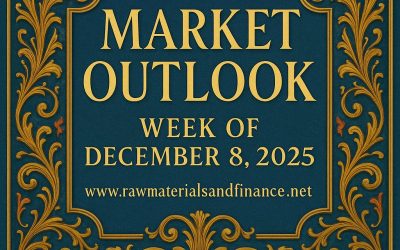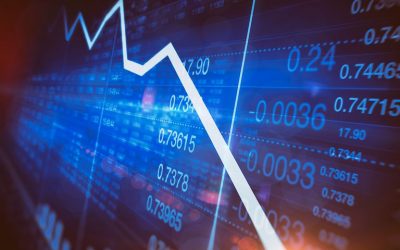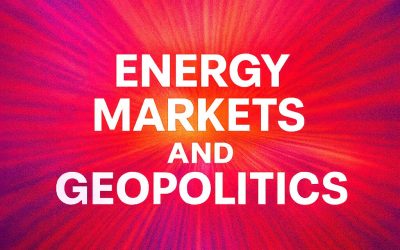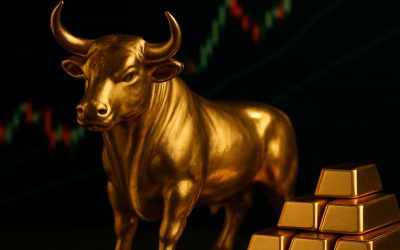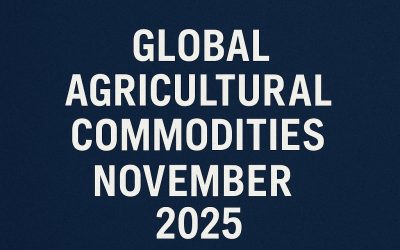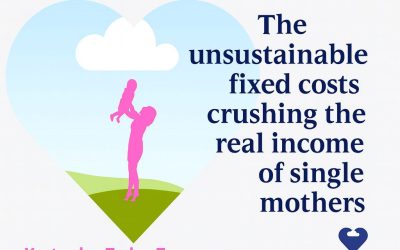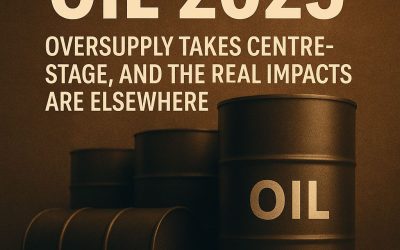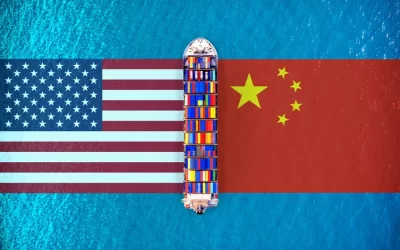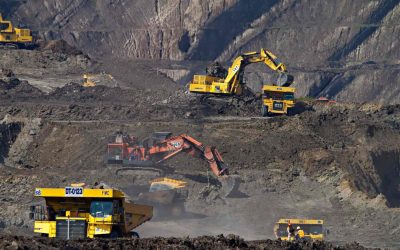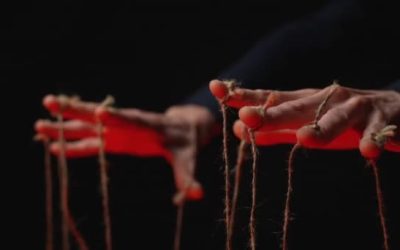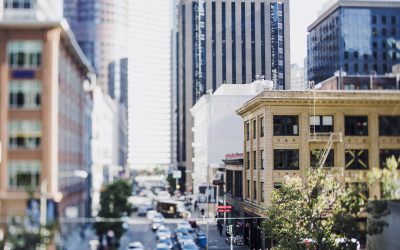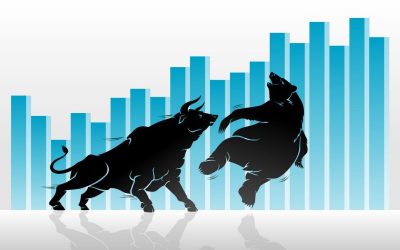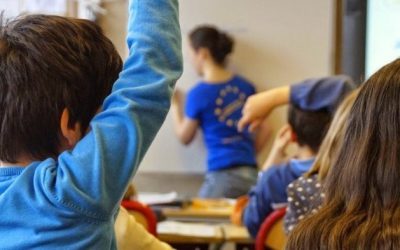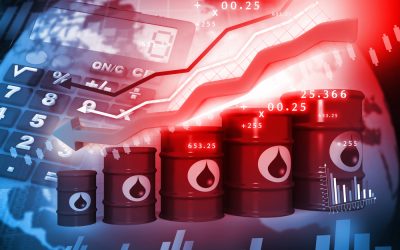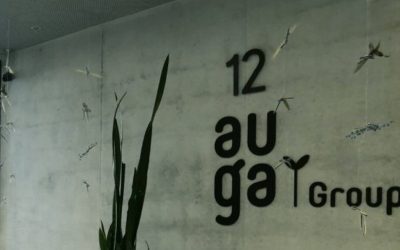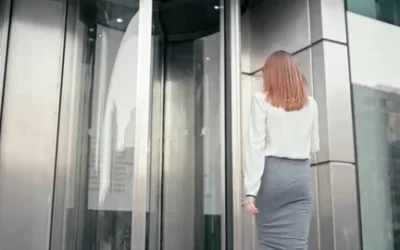04/12/2025
When Globalisation Cracks: How Economic Fragmentation Is Reshaping Prices, Trade and Supply Security
Across policy circles and boardrooms, one word has quietly become unavoidable: fragmentation. No longer a theoretical concern, it has taken shape in the form of desynchronised supply chains, highly targeted trade restrictions, and a global race to onshore critical materials. This shift is far from neutral. It is redefining how raw materials move, how financial markets recalibrate risk, and crucially how inflation travels across borders.
- From Interdependence to “Decoupling”: A New Geography of Costs
Industries at the core of the energy transition (batteries, permanent magnets, semiconductors) rely on deeply concentrated supply chains. When a strategic supplier tightens export controls or when a government accelerates onshoring policies, the impact is not only industrial but financial.
Lower global integration means more frictions in credit markets, growing precautionary inventories, and in the short term, renewed upward pressure on prices. These dynamics have been highlighted repeatedly by central bank officials in recent months.
- How Fragmentation Fuels Inflation
Three transmission channels deserve close attention:
- Production-cost channel: concentrated supply → heightened exposure to shocks → higher import and processing costs;
- Financial channel: weaker financial integration → higher risk premia and more expensive funding, particularly for emerging economies reliant on dollar-denominated finance;
- Inventory and timing channel: firms increase safety stocks → temporary additional demand for critical inputs → spikes in spot prices.
These are not speculative mechanisms. Recent analyses show that a very large share of global trade still depends on bank-based finance and dollar liquidity making commerce uniquely sensitive to episodes of financial volatility.
- Why Developing Economies Bear the Heaviest Burden
Fragmentation does not distribute its costs evenly. Countries with shallow financial systems face a double penalty: reduced access to trade finance and greater exposure to swings in exchange rates and terms of trade.
UNCTAD put it plainly: when financial conditions tighten, trade contracts faster, and the value chains that transform raw materials into employment become structurally fragile. Under these conditions, defensive strategies such as protectionism or “local first” policies quickly reach their limits unless financial mechanisms are reformed.
4. A Concrete Case: Critical Materials and the New Industrial Policy
Rare earths, lithium, and cobalt illustrate the issue sharply. Concentrated production means any disruption becomes systemic: higher insurance premia, renegotiated supply contracts, and a frantic search for alternative providers, all of which push prices higher.
Governments’ attempts to strengthen sovereignty through subsidies, quotas or strategic stockpiles may mitigate some risks but also generate new economic and political costs. This environment calls for innovative financing tools: shared-risk mechanisms, pooled procurement platforms, and multilateral credit lines dedicated to critical materials.
- Implications for Investors and Policymakers
If fragmentation becomes a structural feature of the global economy, traditional geographic diversification will no longer suffice.
Will we see the rise of “resilience-first” portfolios privileging tangible assets and regional supply chains?
Should central banks explicitly integrate fragmentation risk into their inflation scenarios?
These questions shape the feasibility of mining projects, the profitability of long-term import contracts, and states’ ability to finance the energy transition.
- Policy Options
- Transparency and “intelligent” diversification: mapping critical nodes and financing local alternatives when societal costs justify it.
- Dedicated financial instruments: multilateral pooling mechanisms and public-private guarantees to reduce financing costs for strategic imports.
- Proactive but coordinated regulation: avoiding isolated national responses that deepen fragmentation; promoting shared rules for critical materials and recycling.
- Conclusion: An Invitation to Reassess the Global Economic Order
Fragmentation is not merely a technical risk. It has become a political and financial fault line. It forces investors, regulators, and industrial actors to reconsider the architecture of value chains and the allocation of capital. Ignoring its implications means accepting more frequent, more disruptive, and more costly shocks for consumers and for emerging economies alike.
At rawmaterialsandfinance.net, the ambition is clear: to illuminate these structural shifts, propose pragmatic pathways, and foster a serious debate on how to reconcile industrial sovereignty with an intelligent, cooperative form of global integration.
Sources
- Reuters, “Fed’s Collins warns fragmented global economy could push up inflation.”
- Reuters, “Global financial system must adapt to better serve economy, UN trade agency says.”
- UNCTAD, Trade and Development Report 2025.
- OECD, Supply Chain Resilience Review (2025) and analyses on supply-chain reconfiguration.
- The Guardian, “EU unveils €3bn strategy to cut dependency on China for raw materials.”
- OECD, Economic Outlook (inflation data and projections).
Market Outlook: Week of December 8, 2025
At a Glance Equities & Bonds: Markets on edge ahead of key U.S. monetary policy decisions and next week's inflation indicators. Heightened volatility expected in bonds. Rates / Central Banks: Final significant week before the Fed's "blackout period."...
“TODAY’S SLAVERY”: A SOCIO-ECONOMIC REALITY HIDDEN IN PLAIN SIGHT “WOMEN FOR SUSYAINABLE WORLD” PROJECT
Modern slavery is not a metaphor; it is a statistical and economic reality that today exceeds, in scale and structure, the slavery of previous eras. What once relied on chains, markets and physical ownership now takes the form of fragmented supply chains, digital...
When Globalisation Cracks: How Economic Fragmentation Is Reshaping Prices, Trade and Supply Security
Across policy circles and boardrooms, one word has quietly become unavoidable: fragmentation. No longer a theoretical concern, it has taken shape in the form of desynchronised supply chains, highly targeted trade restrictions, and a global race to onshore critical...
Critical Week for Markets: Tensions, Transitions, and Opportunities on December 1, 2025
Global Context : Markets & Macro Climate The week in Europe opens under a cautious mood: major European stock markets are expected to decline on Monday, awaiting numerous macroeconomic releases, notably manufacturing activity in the eurozone. On the energy and...
Global Energy Markets and Geopolitics: A New and Uneasy Equilibrium
Energy markets in late-2025 move like a constellation pulled by several gravitational forces at once: geopolitics, supply chains, climate imperatives, and shifting centres of economic growth. What emerges is not chaos, but a new and still fragile equilibrium that...
Market Outlook for The Week of 24 November 2025
At a Glance Equities: Caution prevails as sector rotation drives volatility (AI vs. defensive plays). Rates / Central Banks: The ECB remains on hold; investors remain vigilant on rate trajectories and credit conditions across the eurozone. Energy (Oil): Brent trading...
“TODAY’S FRANKENSTEINS”: WHEN THE PET MARKET BECOMES A RAW MATERIAL
Behind the tenderness, the wellness rhetoric and the Instagram reels lies a far more powerful engine: a rapidly expanding market built on premium nutrition, insurance, veterinary services, lifestyle branding, and more controversially, genetic selection and aesthetic...
Global Agricultural Commodities in November 2025
Abundance on Paper, Scarcity in the Data Layer 1. Record stocks, soft prices and nervous farmers As November 2025 draws to a close, the global agricultural landscape looks deceptively comfortable. On the physical side, the world has rarely been better supplied with...
THE WORLD FACING THE MASSIVE COST OF FAMILY ABANDONMENT
"WOMEN FOR SUSTAINABLE WORLD" PROJECT In European economic debates, policymakers often focus on the energy transition, industrial competitiveness, or fiscal strategy. Yet a silent phenomenon has emerged as one of the deepest and least visible social fractures of our...
From Jet Fuel to Judgment Day: The True Cost of Flying in a Warming World
Singapore’s Green Gamble: Can a Tiny Nation Change How the World Flies? In a world still dazzled by the revival of international air travel and the resurgence of global hubs, the sovereign city-state of Singapore has quietly declared that it will levy the world’s...
Oil 2025: Oversupply Takes Centre-Stage, and the Real Impacts Are Elsewhere
As we move toward the end of 2025, the global oil market is settling into a pattern unlike the supply shocks of past cycles. The key story is oversupply, not a sudden disruption. And while the headline price of crude may seem limited in its dynamics, the ripple...
GLOBAL ECONOMIC & MARKETS OUTLOOK: NOVEMBER 2025 Beyond the Soft Landing is the Great Sectoral Divergence
EXECUTIVE SUMMARY The global economy is navigating a multi-speed reality where traditional indicators mask radical sectoral transformations. While headline growth appears stable at 3.0% (IMF), beneath the surface we witness the most significant capital...
MOTHERS IN THE AGE OF MACHINES: WHY THE FUTURE HANGS ON THE PRICE OF CARE
We live in a century that worships efficiency. Robots weld, algorithms predict, capital compounds in silence. Yet the arithmetic of humanity is going the other way: fewer cradles, more canes. Across continents, the question is no longer “how many jobs will machines...
Markets: The Trump-Xi Truce Offers a Fragile Breather for Global Investors
Between Tactical Relief and Structural Doubt, Global Finance Holds Its Breath After a turbulent week marked by falling U.S. indexes and a 1.57% drop in the Nasdaq, the meeting between Donald Trump and Xi Jinping in Busan, on the sidelines of the APEC summit, brought a...
Markets – Week Ahead
Between Cautious Breathing and Geopolitical Tension: European Markets at a Strategic Crossroads As a new trading week begins, European markets face a landscape of sharp contrasts: on one side, a global economy entering a phase of controlled slowdown; on the other, a...
THE INVISIBLE HUNGER
Dawn has not yet risen over Europe’s rooftops. In the half-light of her kitchen, a mother silently calculates the month ahead, staring at a cup of coffee she has no time to finish. In the next room, a child is still asleep, his school bag resting against the wall like...
Week Ahead (Oct 20-24, 2025): Markets at the Crossroads of Turbulence and Transformation
In the final quarter of 2025, the global economy drifts through an age of transition, not collapse, not exuberance, but the delicate middle ground of recalibration. The markets, once guided by narratives of expansion, now move according to quieter laws: risk,...
Global Trade Wars and the Steel Industry: Europe’s Hidden Fault Lines
Global Context In the autumn of 2025, the global industrial order stands at a crossroads between trade confrontation and ecological transition. Rivalries between the United States, China, and, increasingly, the European Union are reshaping economic balances. Steel,...
Europe’s Slow Burn: When Patience Becomes Alpha
The Case for Slowness in an Impatient World Europe isn’t roaring; it’s recalibrating. In a global market addicted to velocity, the European Union is quietly mastering the art of measured motion, a slow burn of stability in a world chasing instant gratification. While...
The Silent Empire: Financial Concentration at Europe’s Time of Crisis
Introduction Europe enters the autumn of 2025 under a cloud of uncertainty. Growth remains close to zero across several eurozone economies; inflation lingers despite restrictive monetary policy, and the long-promised industrial revival feels elusive. Beneath this...
Mothers and the Economy: Towards an Optimal Model
The way a society treats its mothers reveals its deepest truths. Where they are supported, trust circulates, children grow in stability, and economies find solid ground. Where they are neglected, everything begins to fracture: intergenerational poverty, declining...
Economic Outlook: October 2025
Global Outlook Global growth remains positive but constrained: the IMF forecasts 3.0% in 2025 and 3.1% in 2026, while the WTO expects a - 0.2% decline in merchandise trade in 2025, followed by a +2.5% rebound in 2026. Inflation is easing but uneven: 2.2% in the euro...
Accounting Scandals: The Enduring Lessons for Every Investor
Trust is the cornerstone of financial markets. Yet, recent history is riddled with resounding scandals that have shattered this trust, wiped out savings, and brought industrial giants to their knees. From Enron to Wirecard, these are not mere historical anomalies;...
Prolonged Euphoria in Global Markets: How Long Can the Rally Last?
Global equity markets are staging impressive performances, with indices such as the S&P 500, the Nikkei 225, and the Hang Seng either reaching or hovering near historic highs. This rally has been fueled by macroeconomic drivers: expectations of rate cuts, easing...
Global Markets: Entering Q4 2025 Between Resilience and Uncertainty
As September unfolds, global markets approach the final quarter of 2025 with a mix of caution and opportunism. According to the IMF, global growth is expected to hover around 3% this year, a figure that masks a highly uneven landscape: advanced economies struggle to...
Economic Outlook: September 2025
Global Economic Overview As we enter September 2025, the global economy exhibits moderate but resilient growth, with the IMF projecting roughly 3% annual expansion.Causes: In advanced economies, the slowdown is largely due to persistent restrictive monetary policies...
Soybean 2025-2026: Navigating Regulatory Shifts, Strategic Opportunities, and Health Uncertainties Autumn and New Season Trend Analysis
As autumn sets in and harvests reach their peak, the global soybean sector is undergoing profound transformation. Amid new environmental regulations, market volatility, and unprecedented health advisories, stakeholders must navigate with agility. Here’s a synthesis of...
The Next Frontier: How Genetic Investment Could Shape Markets by 2035
In August 2025, the Wall Street Journal reported that a number of Silicon Valley leaders are spending tens of thousands of dollars on advanced genetic testing for their children - screening for disease risks and even potential markers of intelligence. While still...
“WOMEN FOR SUSTAINABLE WORLD” PROJECT Europe, Balance, and Inherited Structures: Are We Drifting Toward a Weightless Society?
A clear morning in Brussels. The flags of the European Union fluttered in perfect symmetry, like silent prayers stretched across a troubled century. Below, a homeless man had taken shelter beneath the awning of an institutional building. His expression was not one of...
Energy Markets: Oil’s Fragile Recovery Amid Oversupply and ESG Pressures
The global oil market is entering a renewed phase of price consolidation, yet it remains deeply embedded in structural uncertainty. Brent crude, the global benchmark, currently fluctuates between $68.40 and $70, supported by seasonal fuel demand and a technical...
Clean Energy Transition: The Critical Minerals Race and What Lies Ahead (2025 – 2030)
The global shift toward clean energy is accelerating, driven by climate commitments, technological advancements, and geopolitical realignments. At the heart of this transition lie critical minerals - lithium, cobalt, and nickel - essential for electric vehicles (EVs),...
Markets Poised at Crossroads as Policy Shifts, Valuations Stretch
Markets enter the final days of July confronting a convergence of structural uncertainties, as policymakers, investors, and executives await a series of data releases and decisions that could define global financial conditions through the remainder of the year. From...
Bitcoin’s Supply Is Nearly Exhausted: What It Means for Investors in 2025 and Beyond
As of July 2025, over 95% of all Bitcoin has been mined. According to Clark Moody’s Bitcoin dashboard, roughly 19.9 million BTC out of the total fixed supply of 21 million are already in circulation. This leaves less than 1.1 million coins to be mined - a remainder...
China’s ‘Project of the Century’: What the World’s Largest Hydropower Plant Means for Investors
In a bold display of industrial ambition and environmental engineering, China has broken ground on what promises to become the largest hydropower station in the world, a multibillion-dollar initiative in the Tibetan highlands. Announced by Premier Li Qiang and covered...
A Dry Summer: When Climate Shocks Meet Monetary Tightening
The global economy is entering a new phase of vulnerability - less defined by sudden crises, more by systemic fatigue. Beneath the surface of modest growth projections lies a more complex reality: fractured global trade, tightening credit, and an agricultural sector...
The Investment Case: AUGA Group AB – Sustainable Agriculture as a Future-Proof Investment
Introduction Tucked away in the northeast of the European Union, Lithuania is an agricultural powerhouse that often flies under the radar. Nearly 54% of its land area is dedicated to agriculture, with over 70% classified as arable land - one of the highest ratios in...
Three Stocks to Watch This Week – Investors Await Trump’s Statement amid Geopolitical Tension
As President Trump prepares a pivotal address this week, which may unveil new tariffs and trade policy adjustments, global markets enter a phase of heightened uncertainty. With geopolitical risk elevated, investors are advised to adopt a cautious tone on short-term...
“WOMEN FOR SUSTAINABLE WORLD” PROJECT The Double-Edged Light: When Brilliance & Beauty Abroad Cast Long Shadows
For many bright, beautiful women navigating life far from home, there’s a painful paradox. Qualities that should be undeniable strengths - intelligence, capability, presence, and yes, appearance - can sometimes become sources of struggle or marginalization....
Global Markets at a Turning Point : July 10, 2025
On July 10, 2025, global financial markets continue to walk a tightrope between optimism and caution. While U.S. equities remain near historic highs, commodity prices reflect deeper tensions - both economic and geopolitical. Investors are navigating this mixed...
Global Market Outlook : July 2025, Part II
In the Realm of Signals: When Markets Whisper Before They Roar As July unfolds, global markets find themselves in a moment of suspension - not yet in crisis, not yet in recovery, but undeniably in motion. Economic indicators remain ambiguous, weather maps are more...

